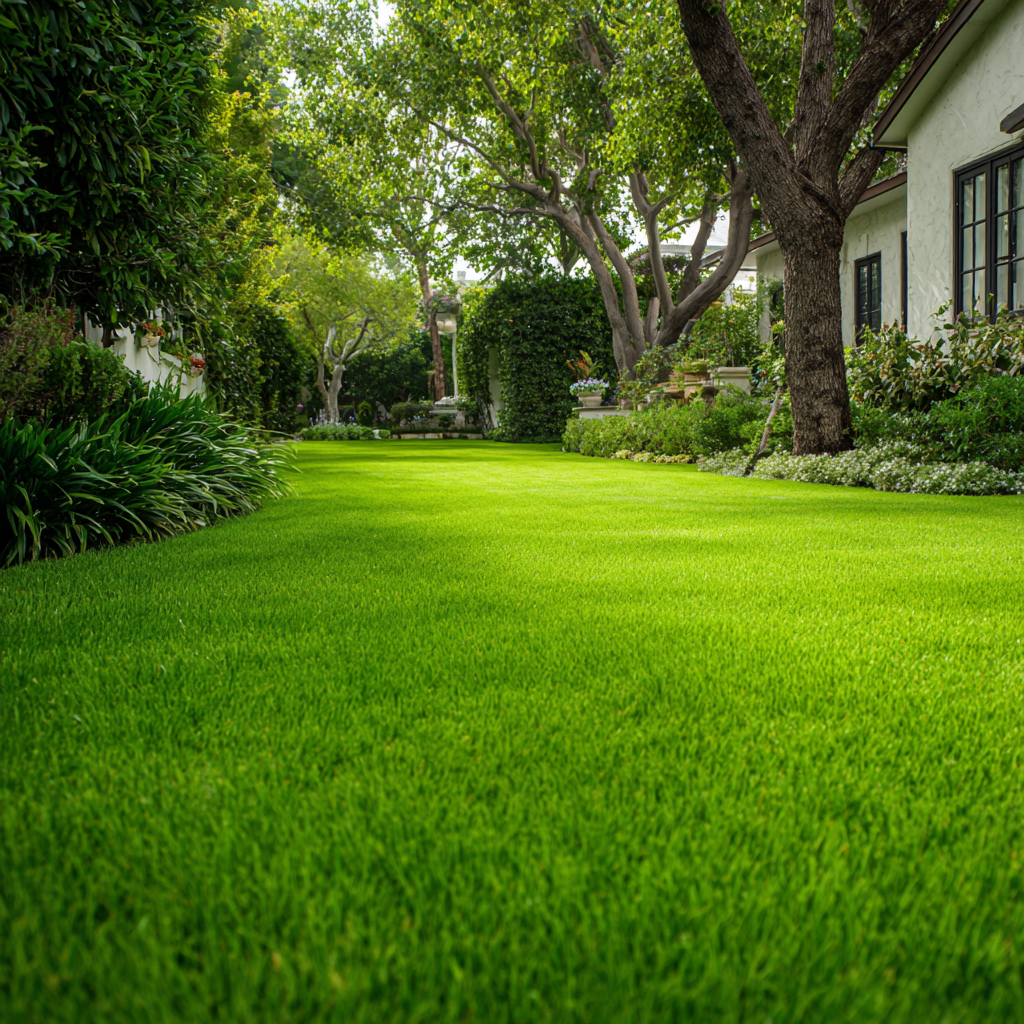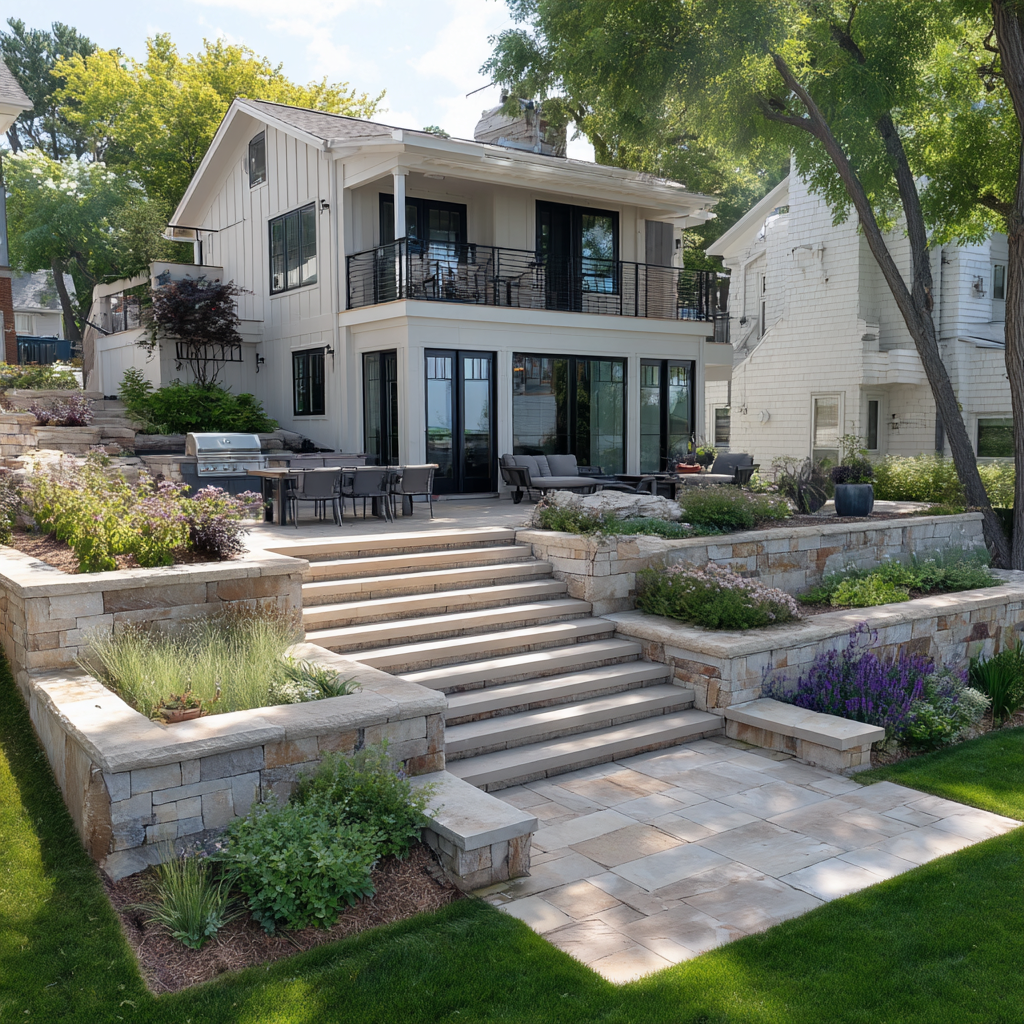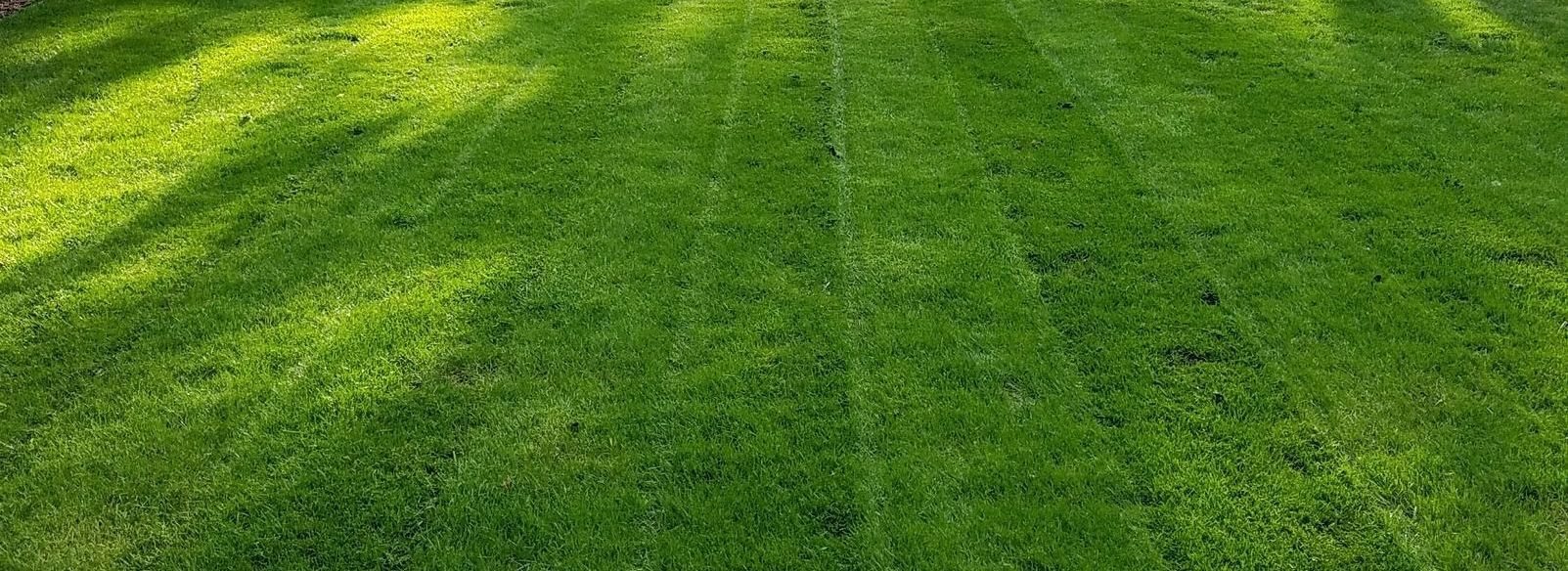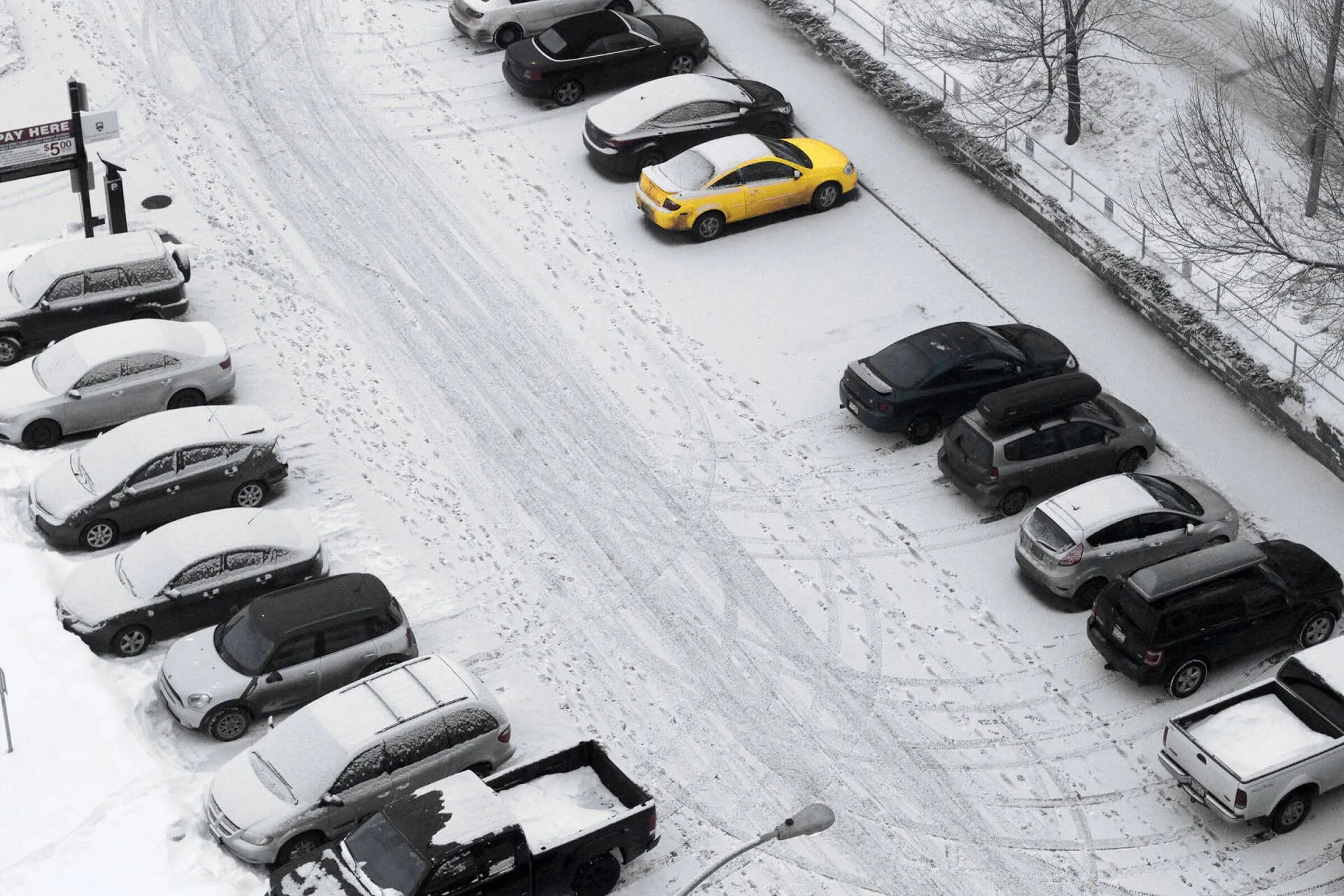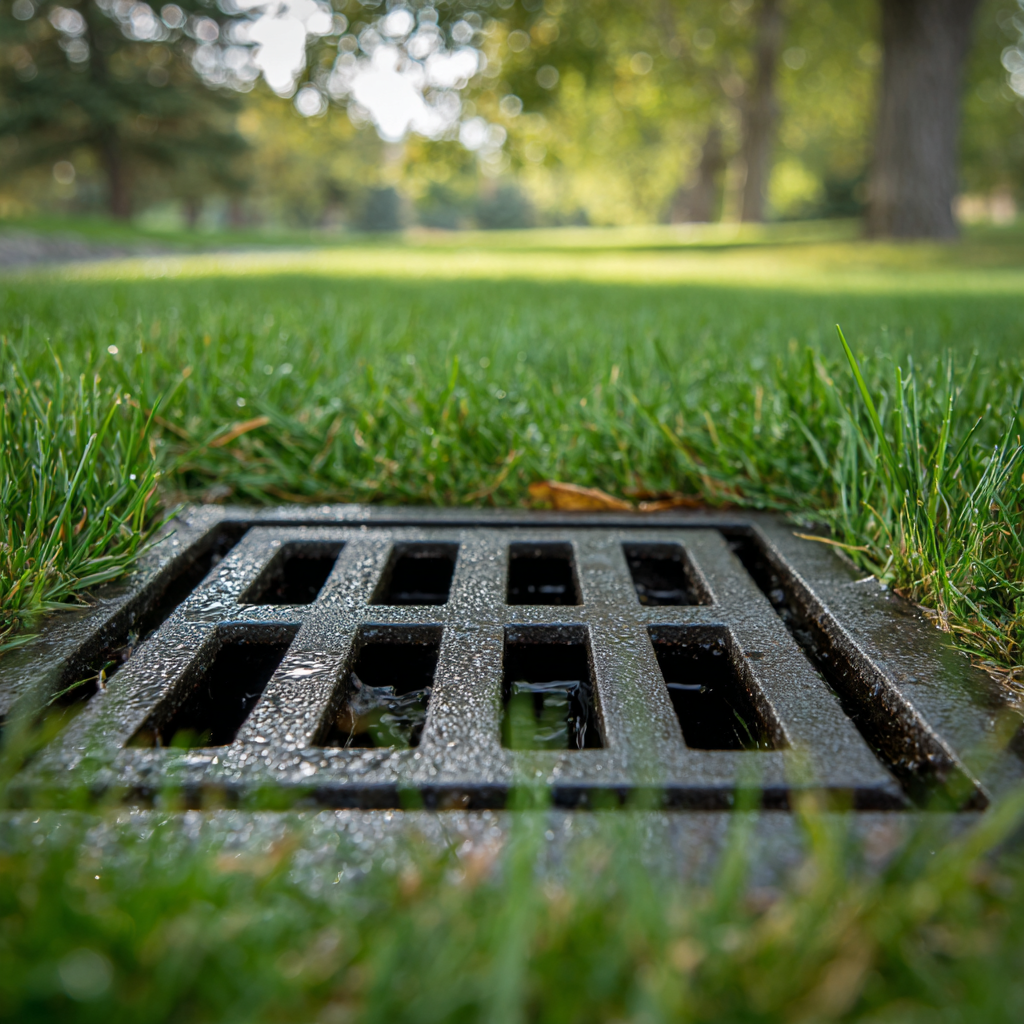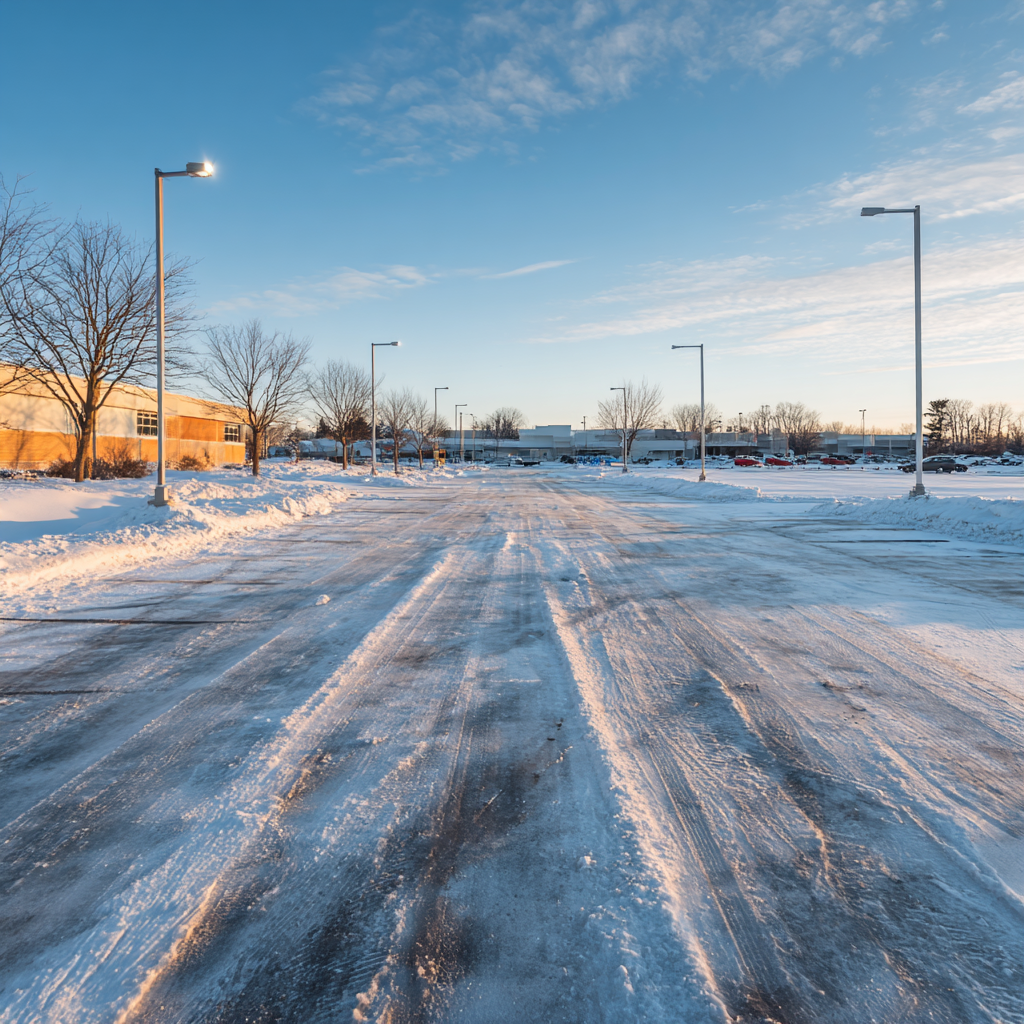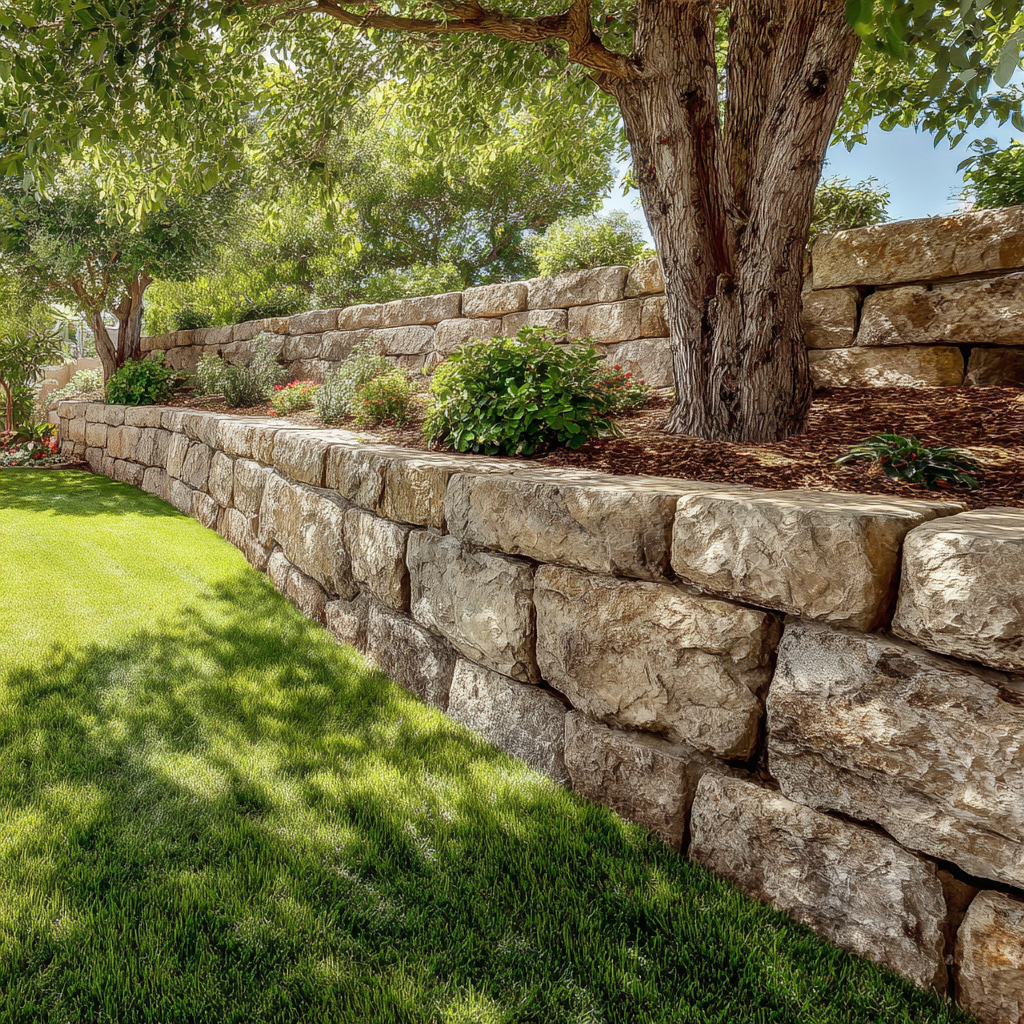New Build Next Door Flooding Your Minnetonka Yard?
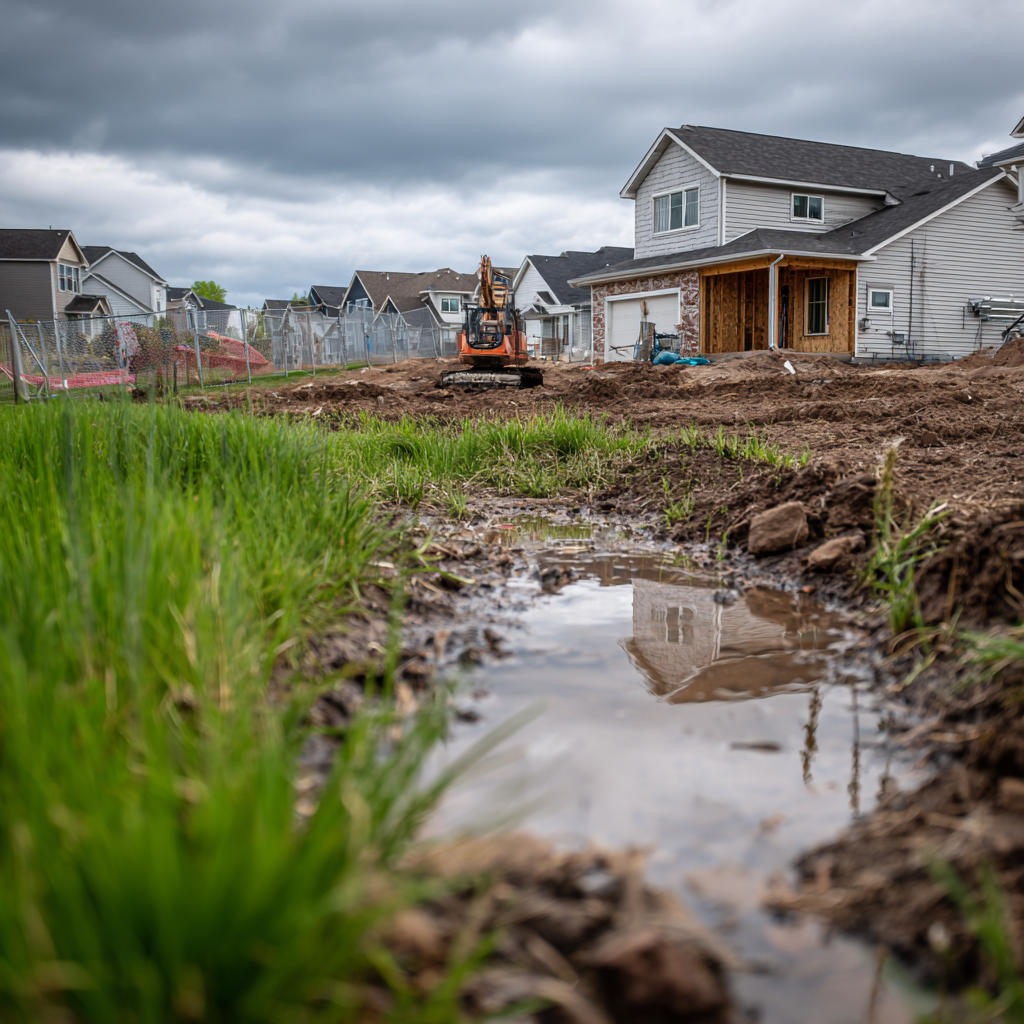
Build Next Door Flooding Your Minnetonka Yard
Your yard worked fine for years. Then construction started next door, and now you've got standing water after every rain. The grass is dying, water's heading toward your foundation, and you're watching it get worse with every storm.
New construction changes everything about how water moves. One grading session with a bulldozer can redirect flows that worked naturally for decades. But here's the part most people miss: you've probably got two to three weeks while permits are still open to get this addressed. After that, you're on your own.
What Actually Happens During Construction
When they clear that lot and bring in the heavy equipment, they're not thinking about your drainage. They're focused on making their site work for construction. But here's what's actually happening to the soil - both theirs and potentially yours.
Those excavators and loaded dump trucks compact soil three to four feet down. We've measured this on dozens of sites - you can see it when we dig French drain trenches next to new construction. The soil structure is completely destroyed for the first three to four feet. Even soil on your side of the property line gets affected by the vibration and the sheer weight of equipment operating twenty feet away. You end up with what we call hardpan - we've hit it with excavators and it's almost like concrete underground. Water hits it and has nowhere to go.
Then they grade their site. They need it level for the foundation, for the driveway, for everything they're building. But water doesn't care about their construction plans - it goes downhill. We've worked on properties where the neighbor's finished grade is only six inches higher, and that's enough to turn a previously dry yard into a collection point for the entire block.
The trees they removed? We've seen this play out repeatedly - a half-acre wooded lot that used to absorb thousands of gallons during storms gets cleared, and suddenly all that water is running off instead. Their new sod, planted last month, isn't doing anything close to what those mature trees were handling.
Here's what surprises people: sometimes your own yard stops draining right even when their water isn't coming over. We've diagnosed this on multiple properties - the soil compaction from construction activity affects yards beyond the property line. The ground that used to absorb your own rainfall can't anymore because the structure's been damaged three feet down. We've seen homeowners wait two or three years for that to "settle" naturally, and it doesn't happen.
The Permit Window Is Everything
Right now, while construction is active, the builder needs the city. They need inspections to pass. They need that certificate of occupancy. They need permits to close so they can sell the house and get paid.
That's your leverage, and it expires fast. We've seen it happen over and over - homeowners wait a few weeks thinking the problem might improve, and by the time they're ready to push for a solution, final inspection has passed and the permit's closed. We had a client last year who waited just three weeks, and by the time we came out to assess the situation, the builder had already gotten final approval and sold the house. Getting them to come back and fix anything at that point was nearly impossible.
The building inspector can hold that final approval if there are legitimate code violations or drainage problems that violate the approved grading plan. But they need documentation. We've helped homeowners prepare this documentation - photos, measurements, videos - and we've seen inspectors take it seriously when it's presented clearly. But they need to hear about it before they've already signed off on everything.
After permits close, you're dealing with the new homeowner. We've been called by plenty of new homeowners who just spent everything buying the house, had no idea there was a drainage problem, and now their neighbor is (rightfully) upset. They didn't create it, but they own the property now, and getting them to spend five or ten thousand dollars fixing something they didn't know about is an uphill battle we've watched play out many times.
Builder Responsibility Versus Reality
During construction, it's the builder's problem. They're causing it. They control what's happening on site. The grading, the compaction, the water management - that's all on them.
After closing, it becomes complicated. We've worked with plenty of new homeowners who had no idea their builder's grading was going to cause problems for the neighbor. They're not trying to be difficult - they just don't have the resources to fix expensive drainage issues right after closing. We've seen situations where the new owner is just as frustrated as the affected neighbor because they inherited a mess.
This is exactly why acting fast matters. We tell every client in this situation: your window to address this while someone with resources and responsibility is still engaged is very short. We've seen too many people miss it, and the solutions become entirely their responsibility and expense.
Document Everything Starting Now
Take photos before you talk to anyone. Get pictures of standing water with your phone's date stamp showing. Measure how far the water extends from the property line - ten feet, twenty feet, however far it goes. We've used this documentation ourselves when working with building inspectors, and it makes a difference when you can show specific measurements rather than general complaints.
Mark where the water collects. Note how long it takes to drain - an hour, six hours, still there the next day. Write down when this started relative to their construction timeline. We've seen cases where homeowners could point to exactly when problems started - right after rough grading, or immediately after they poured the foundation pad - and that timeline matters when you're talking to inspectors.
Go to the city's building department and ask to see the approved grading and drainage plan for the construction. It's public record. We've pulled these plans ourselves for clients and found significant differences between what was approved and what actually got built. That difference is your leverage with inspectors.
Talk to the Right People at the Right Time
The site supervisor is your first conversation. Not the new homeowner who's moving in next month. Not your neighbor's real estate agent. The person running the construction site. We've seen this go both ways - sometimes site supervisors are reasonable and will work with you to address issues. Sometimes they're dismissive and you need to know that quickly so you can escalate.
Go over during working hours, introduce yourself, and explain specifically what's happening. "Since grading started, water pools along the property line and flows into my yard. I'm seeing standing water in areas that never had problems before." Keep it factual. In our experience, leading with threats or getting emotional kills any chance of cooperation.
If you're not getting anywhere with the site supervisor, call the building department. We've accompanied clients to these conversations. Ask to speak with whoever handles drainage inspections. Explain what's happening and ask them to look at it before final inspection. Show them your documentation. Show them the grading plan versus what actually happened on site.
The inspection hold is your strongest card but use it appropriately. We've seen inspectors take drainage complaints very seriously when they're legitimate and well-documented. We've also seen them get frustrated when they feel they're being used as leverage for minor disputes. Make sure you have a real problem with real documentation before you ask them to hold approvals.
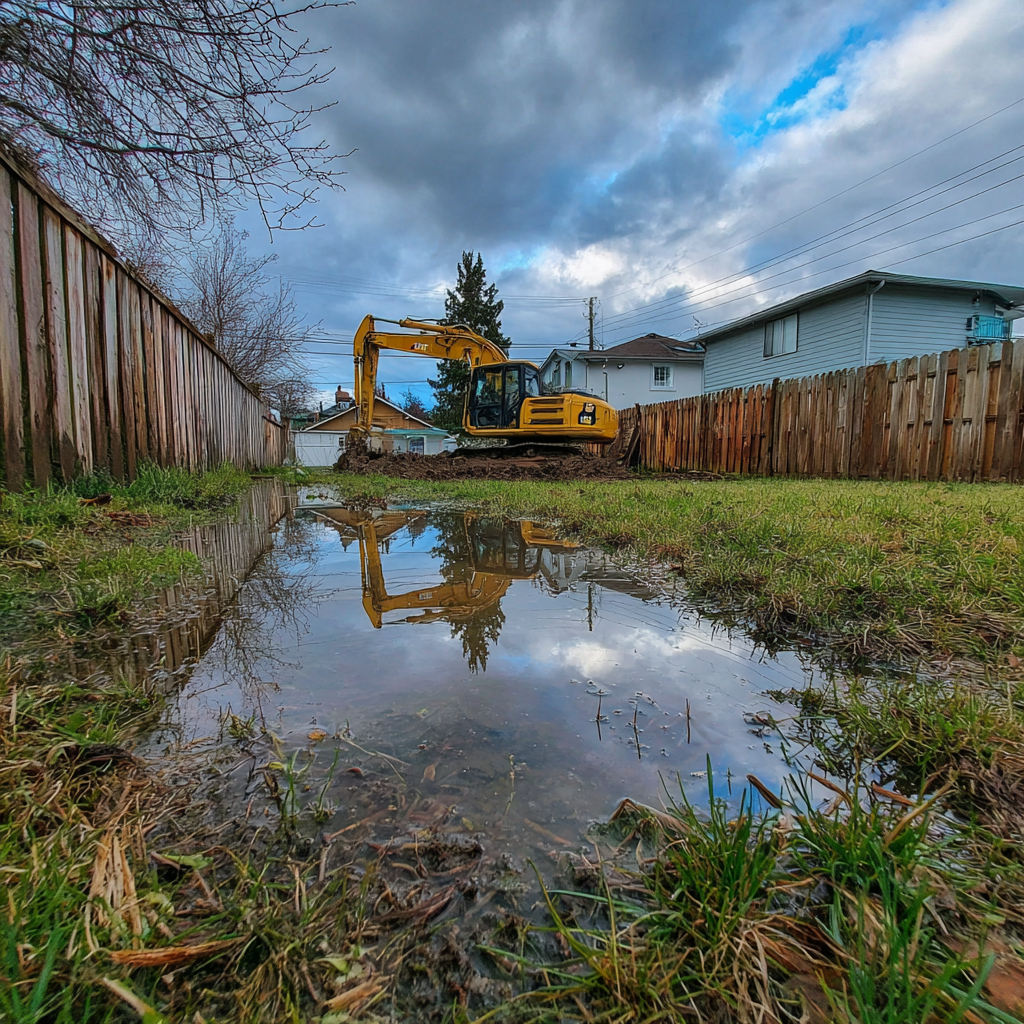
Solutions That Work With Construction Damage
French Drains in Compacted Soil
We install French drains along property lines constantly in these situations, but the design has to account for compacted soil. Standard depth isn't enough - in our experience with Minnetonka's soil conditions and construction compaction, you need to go down four feet minimum, sometimes five, to get below the compaction layer where water can actually move through soil again. We've dug plenty of trenches where the first three feet is like digging through concrete, and then suddenly at four feet you hit soil that's still got structure.
The pipe sizing matters more when you're dealing with concentrated construction runoff. We've replaced systems where homeowners or other contractors used 4-inch perforated pipe, and it simply couldn't keep up with the volume coming off the neighbor's new roof and driveway during heavy storms. We typically use 6-inch pipe minimum for property line applications in construction-affected areas, sometimes 8-inch depending on the drainage area we're managing. We've seen the difference in performance during major rain events.
Catch Basins Where Water Enters Your Property
Construction creates collection points that didn't exist before. We can usually spot these immediately when we walk a property - there's a low spot right at the property line where everything converges. That's where you need a catch basin - something that can handle high flow rates fast. We use 18-inch or 24-inch basins in these applications, connected to solid pipe that moves water away quickly. We've gone back to properties after major storms and seen these systems handling flows that would have created six inches of standing water before installation.
Property line corners are almost always problem areas in our experience. Water naturally concentrates there as it flows downhill. We've installed catch basins at property corners on probably thirty properties in the last few years alone. Put your catch basin where the water is actually going, not where you wish it would go. We've seen plenty of DIY installations that missed the actual flow path by ten or fifteen feet, and they're basically decorative at that point.
Channel Drains for Concentrated Flows
When their driveway slopes directly toward your property line, or when they've got downspouts dumping massive volumes right at the edge of their lot, channel drains make more sense than catch basins. We installed a channel drain system last year where the neighbor's driveway was literally funneling water like a river directly at the client's foundation. Forty feet of channel drain intercepted everything before it could cause problems.
We install these with 6-inch or 8-inch channels, not the small residential ones you see at big box stores. We've tried those smaller systems in construction runoff situations and they overflow immediately during heavy rain. Construction runoff isn't like normal yard drainage - you're dealing with serious volumes arriving fast. We size the system for reality based on what we've seen actually happen during storms.
Swales If You Have Room
If your property has enough space, swales designed for the new grades can move water effectively. But understand what you're working with - this isn't natural topography anymore. We've worked on properties where the neighbor's lot has been bulldozed and graded with artificial slopes that concentrate water in ways that would never happen naturally. Your swale needs to follow where water will actually flow given those artificial grades.
Vegetated swales work if your soil hasn't been too badly compacted. We've had success with these on properties where construction stayed entirely next door and the client's soil is still functional. In areas where construction damage extends onto your property, we've found you're better off with swales that primarily convey water rather than depending on infiltration that's not happening.
Retaining Walls for Major Grade Changes
Sometimes the grade difference they created is so extreme that a retaining wall is really your only option. We've built walls on properties where the neighbor's finished grade is three or four feet higher than it used to be. We build these with proper drainage behind them - perforated pipe in gravel backfill with weep holes through the wall. We've seen walls built without this drainage system, and they fail within a few years when water pressure pushes them over. It's not worth skipping.
Walls over four feet typically need engineering. We bring in structural engineers for these projects. We've seen DIY retaining walls fail catastrophically, and a failed retaining wall is expensive to rebuild and potentially dangerous. Do it right the first time with proper design and drainage integration.
Addressing Soil Compaction
In areas where your soil has been damaged by construction activity, sometimes the drainage solution includes soil remediation. We've used deep ripping with a subsoiler on properties where compaction wasn't too severe - you can break it up if you get deep enough. Severely compacted areas we've encountered sometimes need the soil removed and replaced with properly amended material. We did this on a property last summer where construction equipment had basically destroyed the client's soil for twenty feet onto their property. Had to remove it all and start over.
This isn't always necessary, but when your yard suddenly can't absorb its own rainfall because of construction damage, surface drainage alone won't solve it. We've diagnosed enough of these situations to know you need to address what's happening underground, not just move water around on the surface.
Why Waiting Doesn't Work
E
very few weeks someone calls us saying "the landscaper told me to wait a season and see if it settles." We cringe every time we hear that because we know what's actually going to happen. Natural settling means freeze-thaw cycles working on the top few inches. Root growth gradually creating channels. Earthworm activity. All good things, but they work on surface conditions, not on soil that's been crushed four feet deep by 60,000-pound machines. We've excavated in these areas - the compaction doesn't magically disappear.
Meanwhile, every storm you wait through is another storm pooling water against your foundation. We've seen the progression - first it's just standing water in the yard. Then homeowners start noticing moisture in the basement. Then they're dealing with foundation issues that cost tens of thousands to remediate. Another week of standing water killing grass and breeding mosquitoes. Another month of erosion washing away topsoil.
We've done assessments on properties where homeowners waited a full year hoping things would improve. We walk the property with them and they show us how the drainage problems didn't improve at all - in many cases they got worse. The foundation moisture issues got worse. The dead grass areas expanded. And the builder was long gone with no leverage remaining to push for their involvement in solutions. At that point we're installing drainage systems that cost more because the damage is more extensive.
What We See in These Situations
After working on dozens of these construction-impact cases in Minnetonka over the years, we can usually predict problems before they fully develop. We look at finished grades and know where water will collect based on seeing these patterns repeatedly. We see compacted soil and know it won't absorb water like the homeowner expects because we've dug through it enough times to understand what's actually happening underground. We understand how Minnetonka's clay-heavy soils behave when they've been disturbed by construction - clay is particularly bad for compaction issues.
The properties where homeowners acted fast - either successfully getting builder cooperation or installing their own solutions decisively - those are the ones where we come back two years later for unrelated work and everything's still working perfectly. The ones where people waited months hoping for improvement are the ones calling us back with worse problems and higher costs to fix them. We've seen this pattern enough times that we're very direct with clients about the importance of acting quickly.
Your window is now. Not next month. Not next season. Right now, while permits are open, while the builder still needs the city's approval, while you have any leverage at all to push for solutions.
Construction creating drainage problems on your Minnetonka property? Contact KG Landscape immediately. We'll assess what's happening, document it properly, and design solutions that protect your property whether the builder cooperates or not.

Frequently Asked Questions
Can I legally stop construction if it's flooding my yard?
You cannot stop construction entirely unless there are specific code violations the city is willing to enforce. What you can do is document drainage problems clearly and request that the building inspector address them before signing off on final approval. Your leverage exists during the permitting process when the builder needs city approvals to proceed. We've helped clients document with photos, measurements, and videos, and we've seen inspectors take this seriously when it's presented well. Communicate with inspectors while permits are active. After final inspection passes and permits close, your options narrow significantly to civil remedies that are time-consuming and expensive. We've watched clients go down that road, and it rarely ends well. The key is acting during construction with solid documentation rather than trying to stop work after problems develop.
What can cities actually require builders to fix?
Cities can enforce compliance with approved grading and drainage plans, stormwater management requirements, and codes prohibiting water discharge onto neighboring properties. However, in our experience, enforcement varies by municipality and inspector. Minnetonka requires erosion control during construction and proper drainage in final grading. We've worked with clients who could demonstrate clear violations - such as final grading that contradicted approved plans or water flowing onto their property in ways that violate code - and inspectors had authority to require corrections before final approval. The challenge we've seen is that many drainage disputes fall into gray areas where codes exist but enforcement depends on how serious the inspector considers the violation and how well you've documented the problem.
How long does construction-compacted soil take to drain normally again?
Based on what we've observed excavating on properties years after construction, soil compacted three to four feet deep takes five to ten years minimum to recover naturally, and severely compacted areas may never fully recover without intervention. Natural recovery depends on freeze-thaw cycles creating cracks in compacted layers, plant roots growing and creating channels, and biological activity like earthworms. These processes work primarily in the top twelve to eighteen inches of soil. When we dig trenches in areas with deeper compaction - and we've done this on many properties - that compacted layer is still there years later because natural processes can't effectively reach it. Waiting for natural recovery means accepting poor drainage and ongoing property damage during that entire time. We've used active remediation with deep ripping, soil amendments, or replacement, and these approaches can restore drainage function much faster, though even these take time to fully restore soil structure.
Should I wait to see if drainage problems improve on their own?
In our experience working with dozens of these situations, waiting is the wrong approach in almost every construction drainage case we see. Problems that appear during or immediately after construction rarely improve without intervention - we've seen them typically worsen as patterns become established and damage accumulates. Every month you wait reduces your leverage with builders, increases damage to your property, and raises the cost of eventual solutions. We've had clients call us six months after construction ended, and by that point the builder is completely out of the picture and the damage to their property has doubled. Most critically, waiting costs you the narrow window when permits remain open and you have maximum ability to push for builder accountability. If you're seeing standing water, erosion, flows toward your foundation, or damage to landscaping, these are problems requiring active solutions based on everything we've seen. Document immediately, get professional assessment quickly, and implement solutions decisively rather than hoping for improvement that usually doesn't come.
What if the builder finished and left but drainage problems continue?
We get calls about this situation frequently. Once builders complete construction and move on, your options for holding them accountable drop significantly unless you documented problems extensively during construction and can demonstrate clear code violations or warranty issues. At that point, we focus on implementing solutions on your own property regardless of builder involvement. We assess current conditions, design drainage systems that work with construction-altered landscapes, and provide solutions that function independently of what's happening next door. This typically includes French drains along property lines, catch basins at collection points, channel drains for concentrated flows, and sometimes soil remediation where compaction extends onto your property. We've installed these systems on probably twenty properties in the last couple years where the builder was long gone. While it's frustrating paying for problems you didn't create, we've seen that investing in effective drainage protection usually costs less than pursuing builders through civil litigation and provides immediate relief rather than months of continued damage while legal disputes proceed.
